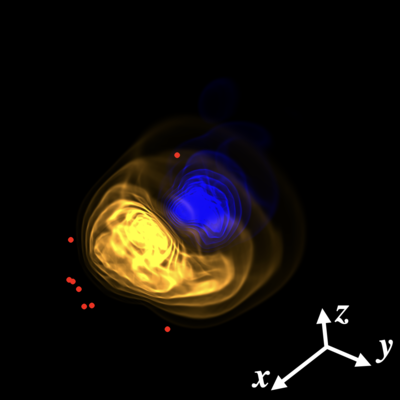Wayne State nuclear theory group develops ultrasonographic probes for relativistic Quark-Gluon Plasma at trillion degrees temperature

by a jet passing through the quark-gluon plasma fluid.
The red points indicate the shower partons of the jet.
Collisions of heavy ions at relativistic energies produce strongly interacting matter in a state of high energy density, known as the quark-gluon plasma. Such events also produce energetic QCD jets that interact, excite, and probe the plasma before being measured by the surrounding detectors. By carrying out (3+1)D numerical modeling, the Wayne State nuclear theory group shows that the reconstructed jets have the potential to distinguish among different possible flow patterns of the underlying strongly interacting fluid. This research, conducted by Yasuki Tachibana (a former WSU postdoc) and Professors Chun Shen and Abhijit Majumder, provides the essential theoretical tools to study precision jet physics in the upcoming SPHENIX experiment at Relativistic Heavy-Ion Collider in 2023-2025. The work is currently the Editor's Suggestion in the journal Physical Review C [Phys. Rev. C 106, L021902 (2022)].